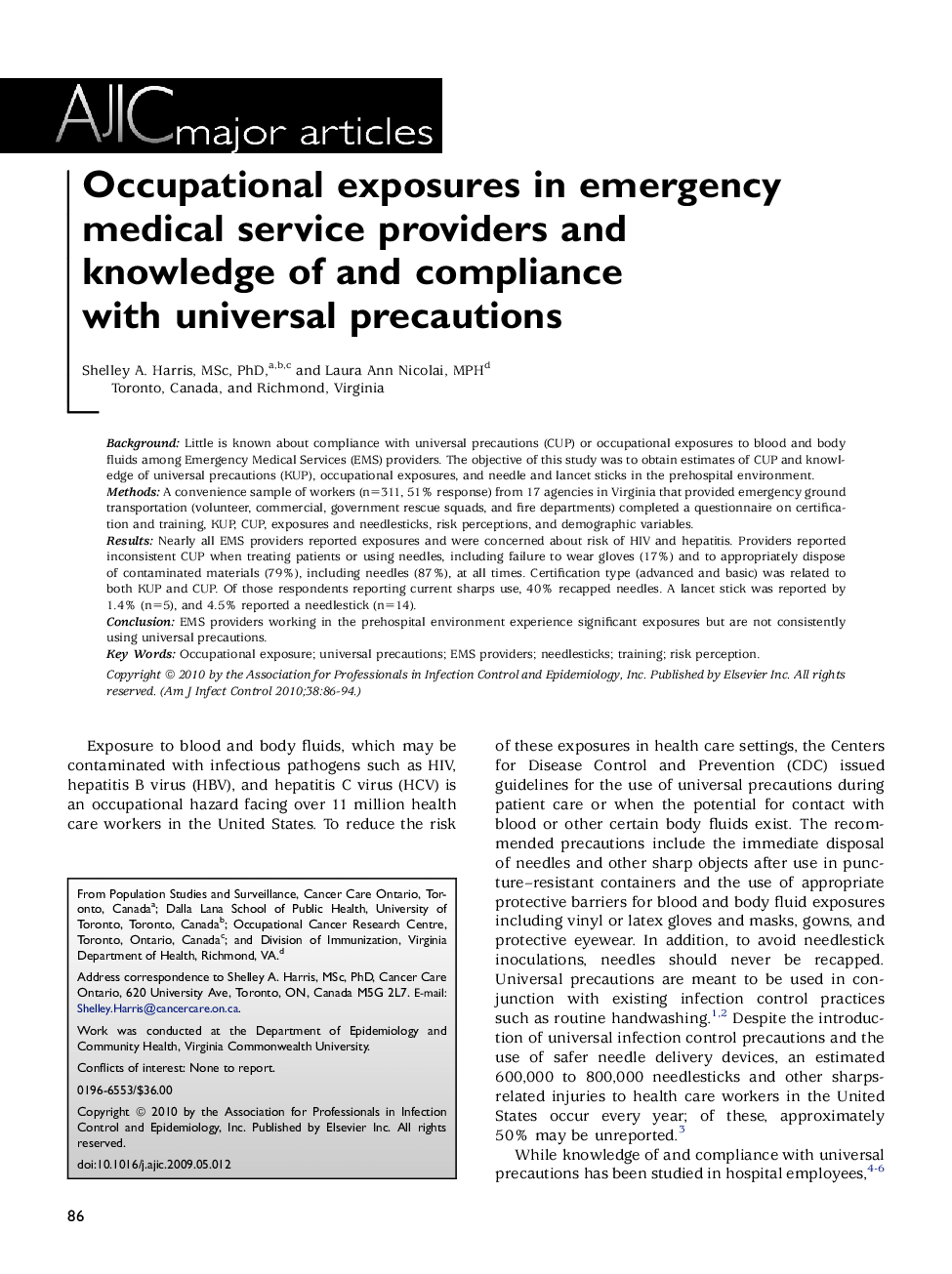| Article ID | Journal | Published Year | Pages | File Type |
|---|---|---|---|---|
| 2640446 | American Journal of Infection Control | 2010 | 9 Pages |
BackgroundLittle is known about compliance with universal precautions (CUP) or occupational exposures to blood and body fluids among Emergency Medical Services (EMS) providers. The objective of this study was to obtain estimates of CUP and knowledge of universal precautions (KUP), occupational exposures, and needle and lancet sticks in the prehospital environment.MethodsA convenience sample of workers (n=311, 51% response) from 17 agencies in Virginia that provided emergency ground transportation (volunteer, commercial, government rescue squads, and fire departments) completed a questionnaire on certification and training, KUP, CUP, exposures and needlesticks, risk perceptions, and demographic variables.ResultsNearly all EMS providers reported exposures and were concerned about risk of HIV and hepatitis. Providers reported inconsistent CUP when treating patients or using needles, including failure to wear gloves (17%) and to appropriately dispose of contaminated materials (79%), including needles (87%), at all times. Certification type (advanced and basic) was related to both KUP and CUP. Of those respondents reporting current sharps use, 40% recapped needles. A lancet stick was reported by 1.4% (n=5), and 4.5% reported a needlestick (n=14).ConclusionEMS providers working in the prehospital environment experience significant exposures but are not consistently using universal precautions.
